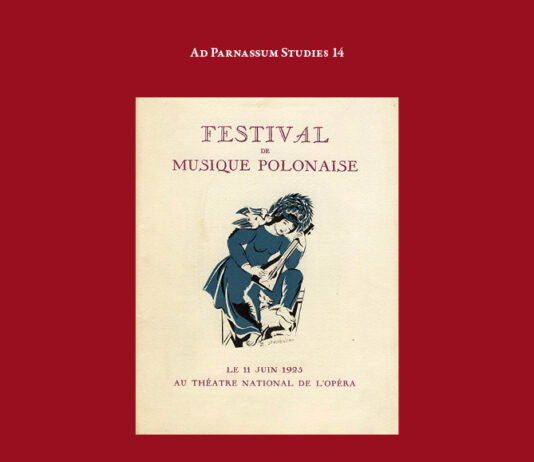European Fin-de-siècle and Polish Modernism. The Music of Mieczysław Karłowicz
edited by Luca Lévi Sala, Bologna, Ut Orpheus Edizioni, 2010 (Ad Parnassum Studies, 4), ISBN: 978-88-8109-467-7.
Contents
Essays by Tomasz Baranowski, Andrzej Chwałba, Stephen Downes, Peter...
Beyond the Stage
Musical Theatre and Performing Arts between ‘fin de siècle’ and the ‘années folles’.
edited by Giuseppe Montemagno and Michela Niccolai, Bologna, Ut Orpheus Edizioni, 2017 (Ad...
Ad Parnassum Journal Vol. 21 – No. 41 – October 2023
Contents
News, Bios, Books Received and Abstracts
Ad Parnassum Journal – Vol. 21 – No. 40- April 2023
ARTICLES
Beverly Jerold
Equal Temperament and Johann Sebastian Bach’s Music
Fabrizio Ammetto, Francisco Javier Lupiáñez Ruiz, Luis Miguel Pinzón Acosta
The Thematic Catalogue of the Musical Works of...
Ad Parnassum Journal – Vol. 20 – No. 39- October 2022
ARTICLES
Fabrizio Ammetto, Francisco Javier Lupiáñez Ruiz, Luis Miguel Pinzón Acosta
The Thematic Catalogue of the Musical Works of Johann Georg Pisendel (PW): I. The Chamber...
Ad Parnassum Journal – Vol. 20 – No. 38- April 2022
Ad Parnassum Vol. 20 - No. 38 - April 2022 pp. 112
ARTICLES
Michael Talbot
Two Unsuspected New Violin Sonatas by Tomaso Albinoni in the Estensische Musikalien
Nieves Pascual León
La...
Ad Parnassum Journal – Vol. 19 – No. 37- October 2021
Ad Parnassum Journal - Vol. 19 - No. 37 - October 2021, pp. 128
ARTICLES
Barry Cooper
The Origins of the Opening Motif in Beethoven’s Fifth Symphony
Imre...









